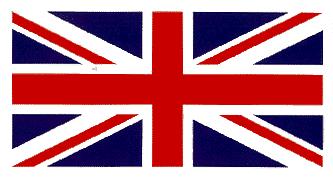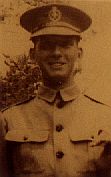The Bermuda Volunteer Rifle Corps
(Bermuda Rifles, post WWII).
1894 - 1965


After the Napoleonic Wars, many in britain felt, not unjustifiably, that the government was neglecting the military, in general, and Britain's military defences in particular, to the benefit of the Royal Navy. The strength of the navy, and the natural barrier of the English Channel were seen by many in government as sufficient to dissuade any adventures by European powers, and much of what Army there was was increasingly deployed overseas, expanding and garrisoning the growing Empire.
Many in great Britain, however, saw the Royal Navy, seriously undermanned and overstretched on a similarly world-wide deployment, as an ever weaker defence as technology gave the growing European navies the ability to ferry ever larger armies ever more swiftly. Coastal artillery began a long slide which, by the Great War would see the average piece greatly outranged by the naval artillery that would be levelled against it. Worse, should enemy soldiers make an effective landing, it was feared the number and dispersement of regular infantry soldiers actually available in Britain would be unable to mount a cohesive, or sufficient defence.
At that time, the regular soldiers of the British Army had very little in the way of a citizen reserve. There still existed two primary types of part-time or reserve soldier, but these had been withered away by years of neglect. The Yeomanry were little more than local sherriffs and possibly some troops of horsemen, while the officially-organized Militias were almost moribund.
Many notable citizens concerned themselves with this issue, and it was soon decided that the only solution was for the citizens to take the matter into their own hands, with or without the involvement of the Government, the War Office or the Army.
A new Army was to be raised, composed of part-time volunteers. The units would be raised locally, and associations would be appointed to raise and oversee their funds. An overarching command structure and organization would oversee its entirety at the national level. This new Army, known as the Volunteer Army, had no support, at first, from the British Government, or Army. Both initially eyed it warily, but were unable to stop its formation as there was no law then to prevent it.
The Volunteer Army was built around the Rifle Corps. These corps varied in size. Some were quite small, and centered around a single armoury. Others, especially in populous areas, might have several sub-units.
Some were raised, and titled, regionally, while others were raised by tradesmen ( such as the Post Office rifles, and the Artist's Rifles). Oxford and Cambridge universities raised their own corps, with students volunteering as riflemen and the Professors as officers.
One thing they all had in common was that Volunteers were unpaid. Most had to pay for their own uniforms and rifles, and were uncompensated for any financial losses their training incurred them.
Such was the popularity of these corps, the Government would doubtless have found them very hard to stop, even if it had a law handy. nonetheless, it left the Volunteer army completely to its own devices in its early years. If there was any standardization of equipment or training, it was purely within the VA, and there was no attempt at commonality with the practice of the Regular Army. Likewise, the officers of the corps were appointed according to their own practices - from the ranks, or from high born, or socially esteemed personages.
The turning point in the development of the Volunteer Army came with the Crimean War. Britain found it had far too few soldiers on hand to build an effective expiditionary force and was forced to use Militia and Volunteer units to make up the shortfall. This war was to lead to considerable official rethinking on the role of the British Army, leading, in time, to the redeployment of regular units back to Britain to create a ready defence, and to the creation of the British Expiditionary Force as a standing body with all the neccessary elements to rapidly deploy wherever they were needed.
In the meantime, it was decided by the ministers and the generals that the Volunteer Army wasn't such a bad idea after all, and would allow the War Office to meet much of its newly rethought commitments more economically. The War Office began to take an active interest in the Volunteer army's welfare, standardising equipment and training. The requirements for commissions were standardized and brought, as closely as was able, in line with the demands placed on regular officers. The organization, tasking and training of the Volunteers was increasinglt organized centrally by the War Office.
The older Yeomen and Militias were seen as excess to need and were folded into the Volunteer Army. Most notable of these were the Militia Artillery, which were responsible for much of Britain's coastal artillery and other garrison artillery defences.
Throughout this phase of its existence, the Volunteer Army remained technically an independent, citizen-organized operation. It was still overseen by civilian associations responsible for controlling its purse strings. By the end of the century, however, the Volunteer Army was on the brink of bankruptcy. It had, by then, become so critical for British defence that the Government could not allow it to fail and it was finally taken over entirely as an organ of the Government in 1908. Its organization remained largely similar with the Government taking over the appointment of the civilian boards.
Many changes were made, though, starting with the name. It was now known as the Terretorial Army, as it continues to be titled today. The various Corps were rationalized - all of the London Volunteer Corps, for instance, becoming companies of a new London Regiment. Each volunteer unit was tied to a regular Army unit, also, and in time most would ultimately become numbered battalions of those Regular Army Regiments. The links were usually made with the local 'County Regiment', but there were exceptions. A Scottish Highland Volunteer unit of the Liverpool Regiment was affiliated, not with the local infantry regiment, or even another regular English regiment, but with a Highland Regiment from Scotland, the Queen's Own Cameron Highlanders.
The advantage of the links between specific volunteer and regular units was that the Regular regiment could take the Volunteer under its paternal wing. Loans were made of regular senior NCOs, Warrant Officers and commissioned officers, who both brought the benefit of their professional experience, and ensured standardization of practice with the Regulars.
As the Volunteer Army was going through this evolution, the Regular Army was changing too. Redeployment of its strength began in the 1860s, and the Cardwell Reforms of the 1880s saw a rationalization similar to what the Volunteer Army would later see. Single battalion regiments raised in close proximities were amalgamated to form numbered battalions of a single regiment, though one may have been on long term posting to India, and another might be stationed at home. A common regimental command structure, and a regimental depot were established, and all recruitment and training centralized.
Neccessary to this reformation, redeployment and retasking of the Regular Army homeward was the shouldering of the burdens it was surrendering in various parts of the Empire by locally raised forces.
The Dominions were largelly able to look after themselves by this point, but many of the critical points in Imperial Defence were small colonies, like Bermuda, that possesed an importance quite out of proportion with their sizes or the capabilities of their small populations. In Bermuda, the military and naval manpower composed a
NEXT